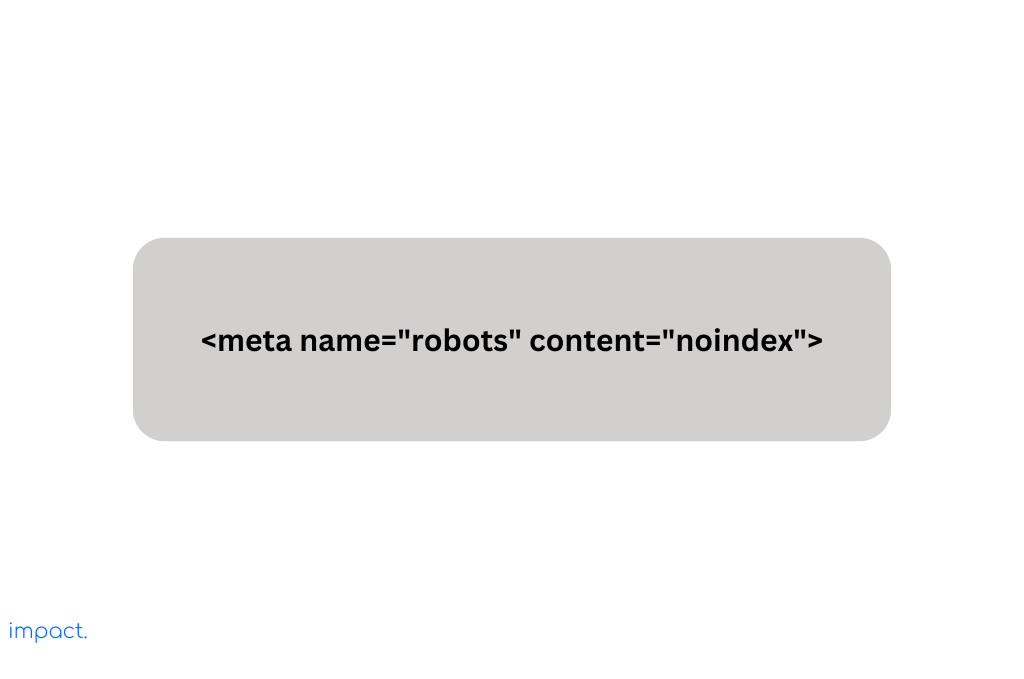Blue Ocean Strategy: 7 Steps to Ignite Business Transformation
“Blue Ocean Strategy,” by W. Chan Kim and Renée Mauborgne, is a pioneering blue ocean…
Insight Team
January 1, 2025In the previous chapter, we talked about on-page SEO and how it helps your content show up better on search engine result pages. Now, let’s delve into another important aspect of website optimization: technical SEO.
Technical SEO is all about fine-tuning your website to meet the ever-changing requirements of search engines. It goes beyond just creating good content and focuses on the technical stuff affecting how well your site appears in search results. This article will explain why technical SEO is important and give practical tips to improve your website’s performance.
Read more: SEO Fundamentals: Key Definitions & 4 Best Practices
Technical SEO is all about optimizing the technical parts of your website to make it more visible and perform better in search engine rankings. It deals with the behind-the-scenes elements that search engines rely on to crawl, index, and understand your website’s content.
Technical SEO also involves various tasks to improve user experience and search engine friendliness. Some common activities include:
Focusing on these technical optimization tasks can improve your website’s visibility, user experience, and overall performance in search engine rankings. It’s a vital component of a successful SEO strategy to attract organic traffic to your website.
Creating good content isn’t enough in today’s digital landscape if people can’t find or see it. That’s where technical SEO comes into play.
Technical SEO helps search engines like Google recognize the value of your website. Technical optimization is important because search engines want to provide users with the best results for their search queries. Focusing on technical SEO ensures that your website meets the requirements and increases the chances of ranking higher in search results.
If your web pages take forever to load, visitors may become frustrated and leave your site. This negative user experience can signal search engines that your website isn’t up to par. On the other hand, if your website loads quickly, has no broken links, and is secure, it boosts search rankings.
In a nutshell, technical SEO is important because it helps search engines recognize the value of your website, improves user experience, and ultimately boosts your search rankings. By paying attention to technical aspects such as page speed, link quality, and website security, you increase your chances of being discovered by users and gaining visibility in search engine results.
Read more: On-Page SEO: Key Components and 4 Mistakes to Avoid
To improve your website’s technical performance, knowing what makes a technically sound website is important. A technically optimized website has certain important features that help it perform well. Let’s take a look at some key characteristics you should be aware of:
When it comes to technically optimized websites, one of the main goals is to make sure they load quickly. Page speed is important because it improves the experience for users who visit the site and also helps improve its ranking on search engines.
Ideally, websites should open within the space of three seconds. Optimizing images, minimizing code, using browser caching, and utilizing CDN (Content Delivery Network) can speed up your website and improve user experience.
As more people use mobile devices, technically optimized websites are created to work well on different screen sizes. These mobile-friendly websites provide a better user experience. Search engines prefer them, especially now that mobile-first indexing is in place.
A well-organized site structure is important for search engines to crawl and understand your website’s content effectively. Arrange your website logically and organized, using clear categories and menus that are easy to navigate.
It also involves creating user-friendly URLs that include relevant keywords to give search engines a clear idea of what each page is about. Having a well-structured site improves your website’s visibility. It makes it easier for search engines to index and rank your content.
Technically optimized websites prioritize security using HTTPS (Hypertext Transfer Protocol Secure) to protect data transmitted between the web server and the user’s browser. HTTPS ensures that information, like login credentials, is encrypted and safe from interception.
To enable HTTPS, you’ll need an SSL certificate. Search engines, like Google, recognize security’s importance and consider it a ranking factor. Secure websites have a higher ranking than those without proper security measures. Implementing HTTPS safeguards user data and boosts your website’s visibility in search engine results.
Technically optimized websites use a sitemap, like a file containing a list of all the pages on your website. Sitemaps help search engines find and understand your website’s content better, so it can appear more easily in search results. The sitemap categorizes content such as posts, pages, tags, and other types. It also provides information on the number of images on each page and when they were last updated.
Technically optimized websites use a special file called robots.txt. It’s like a set of instructions for search engine robots on how to explore your website. This file tells the robots which parts of your site they can or cannot visit. You can specify what actions are allowed or disallowed for different types of robots. By correctly setting up the robots.txt file, you can control what content search engines can see. It helps you keep irrelevant or sensitive pages hidden from search results.

Certain pages on your website shouldn’t show up on search engines. These pages usually include “thank you” pages, ads landing pages, not-so-great content pages, old blog archives, author and tag pages, and login pages.
To stop these pages from showing up in search results, you need to use something called a “noindex” tag. Place this small HTML code snippet in your web page’s <head> section. The tag tells search engines not to include specific pages in their results.

When Google sees the same content on different pages of your website, it can get confused about which page to put in its search results. This is where canonical tags help.
The canonical tag (you write it as rel=”canonical”) acts like a pointer to the main version of the content. It helps Google know which page to focus on for indexing and ranking.

Now that you understand the important elements for optimizing a website, let’s dive into the actionable steps to achieve it. The process involves following a structured approach consisting of eight steps.
The initial step towards technically optimizing your website is conducting a thorough technical audit of its elements. This process involves identifying issues such as broken
links, duplicate content, slow page loading, crawl errors, and problems with indexing.
To help with the audit process, you can utilize tools like Google Search Console, Bing Webmaster Tools, and other SEO auditing tools. These tools provide valuable insights and data to identify technical issues and areas that need improvement.
The next step is ensuring you have a sitemap that lists all the pages you want search engines to check. Confirm that the sitemap is properly formatted and submit it to search engines through their webmaster tools. Also, review and optimize your robots.txt file to ensure that important pages can be crawled and indexed by search engines without any restrictions.
Focus on enhancing user experience and search engine rankings. You can start by reducing the size of your images, making them smaller without compromising quality. Optimize your CSS and JavaScript files by removing unnecessary code or spaces.
Enabling browser caching allows visitors to store certain elements of your website locally so they don’t need to be downloaded again on subsequent visits. Another effective technique is to utilize content delivery networks (CDNs) that distribute your website’s content across various servers worldwide, enabling faster user access.
You can rely on tools like Google PageSpeed Insights or GTmetrix to evaluate your website’s speed. These tools provide detailed reports and recommendations to improve performance. By taking these steps, you can enhance your website’s speed and provide a smoother experience for your visitors, positively impacting your search engine rankings.
It is important to ensure that your website is mobile-friendly, which means it should be easy to navigate and read on different screen sizes. You can achieve this by using a responsive design that automatically adjusts the layout to fit various screen resolutions.
You can use Google’s Mobile-Friendly Test tool to check if your website is mobile-friendly. If you discover issues, take the necessary steps to fix them and ensure a smooth experience for mobile users.
The next step in technical SEO is ensuring your website’s URLs are clean, descriptive, and easy for search engines to understand. Use hyphens to separate words in your URLs, and avoid using complicated codes or symbols. A better URL structure helps make your URLs user-friendly and search engine-friendly.
Additionally, it’s important to set up proper redirects, particularly 301 redirects, when you move or rename any of your website’s pages. This way, users or search engines will be automatically redirected to the new and correct page when they visit the old URL. By doing this, you can ensure a positive user experience, safeguard the value of your current links, and avoid any broken links.
Now, let’s add structured data to your content pages. This step helps Google better understand what’s on your webpage. When you use the correct structured data code, your pages can display special search result features.
These unique results are known as rich snippets. They provide additional information beneath the title and description in search results. Rich snippets are valuable because they set your pages apart from others. This distinction can encourage more people to click on your link when they come across it in search results.
Google supports various types of structured data codes. Choose the one that suits the content you want to enhance with structured data. For example, if you have a recipe website, you can utilize structured data to present details like cooking time and ratings directly in the search results.
The next step is to make sure your website is secure. To do this, obtain an SSL certificate and use the HTTPS protocol. This encryption helps protect users’ data on your site, such as personal information or passwords. It also builds trust with your visitors and can improve your rankings on search engines.
Additionally, it’s important to keep your website’s software and plugins up to date. Regularly updating them helps fix any security vulnerabilities, making it harder for hackers to exploit your site. By taking these steps, you can enhance the security of your website and provide a safer browsing experience for your users.
Finally, technical SEO is an ongoing process that requires regular monitoring and updates. You should use different tools and analytics to monitor your website’s technical performance. The method includes reviewing reports on how search engine crawlers access your site, checking if all your pages are indexed properly, and monitoring other technical metrics affecting your site’s visibility.
By staying updated with the latest best practices and changes in search engine algorithms, you can adjust your technical SEO strategies accordingly. Search engines frequently make updates to improve their search results, so staying informed and adapting your website’s technical aspects is important. This optimization ensures your website remains in good shape and performs well in search engine rankings.
Read more: Search Engines: Inner Workings & 6 Ways to Rank Higher
Optimizing your website with technical SEO is important. It deals with the technical stuff affecting how your site appears in search results. When you do technical optimization, search engines like Google can better understand the value of your website.
A good site structure is key to getting noticed by users and ranking higher in search engines. If your web pages take forever to load or have broken links, it can frustrate visitors and tell search engines that your site isn’t up to par.
In the next chapter, we’ll talk about off-page SEO, specifically link-building and establishing authority. Off-page SEO is crucial for improving your online presence. By getting high-quality links from trustworthy sources and positioning your website as an authority in your industry, you can boost your search rankings and attract more organic traffic.
Impact Insight Team
Impact Insights Team is a group of professionals comprising individuals with expertise and experience in various aspects of business. Together, we are committed to providing in-depth insights and valuable understanding on a variety of business-related topics & industry trends to help companies achieve their goals.
75% of digital transformation projects fail. Take the right first step by choosing a reliable long-term partner.
